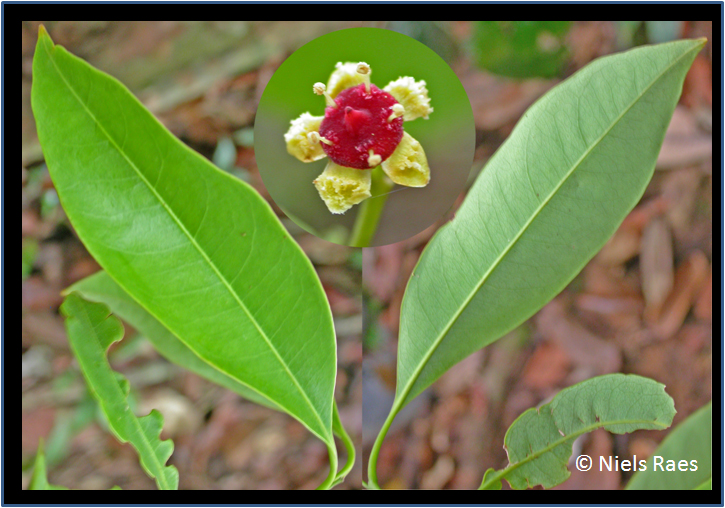Lophopetalum wightianum Arn., Ann. Nat. Hist. 3(16): 151 (1839)
(Named after 'R. Wight' [1796-1872], physician in India and superintendant of the botanical garden of Madras)Synonyms
Lophopetalum fimbriatum Wight
Lophopetalum winkleri Loes.
Description
Large trees up to 60 m tall and 195 cm diameter, sometimes with buttresses. Bark coarsly fissured. Leaves simple,
usually opposite, sometimes alternate; petiole 0.8-2.5 cm long, terete; lamina 8-26 x 4-10 cm, elliptic-oblong, apex acute
to acuminate, base rounded, margin entire, chartaceous or subcoriaceous; secondary_nerves 6-13 pairs; tertiary_nerves
horizontally reticulo-percurrent. Inflorescence panicles up to 12 cm long; flower petals dull red, disk bright red. Fruit a capsule,
3-4 angled, elongated; seeds many, white, papery winged.
Ecology
Emergent trees in low elevation wet evergreen forests and often found in swamps and along streams, up to 900 m.
Distribution
Pakistan, India, Indochina and Southeast Asia.
Uses
The timber is used as perupuk.
Local names
Indonesia/Malaysia: Bau Langit, Keruie, Mata Ulat, Medang assam, Nasi-nasi, Perupok, Perupuk Unung, Terupuk telang.
Thailand: Deemee, Samet-thung.
Vietnam: Ba Khisa.
